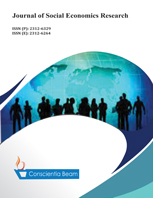The determinants of foreign direct investment in conflict-prone environments: A case study of Palestinian territories
DOI:
https://doi.org/10.18488/35.v11i4.3979Abstract
The purpose of this paper is to investigate the complex relationship that exists between foreign direct investment (FDI) and armed conflict intensity, specifically in the Palestinian territories during the ongoing conflict with Israel. It examines various determinants, including market size, trade openness, labor cost, inflation, infrastructure, and fixed capital formation. Using available quarterly data from Q1 2010 to Q3 2023 and using EViews 13 software, the study adopted the Autoregressive Distributed Lag (ARDL) estimating model approach. The study concludes that the intensity of the armed conflict has a conclusive negative impact on the volume of foreign direct investment flow to Palestinian territories. It was also found that market size, trade openness, and gross capital formation are the main determinants contributing to the inflow of FDI and mitigating the negative impact of armed conflicts. Additionally, the study reveals that escalating conflict and Israeli occupation severely limit infrastructure access, contributing to its degradation and hindering foreign direct investment. It recommends that policymakers in conflict-affected areas prioritize peacebuilding and implement risk-reduction strategies to enhance political stability, promote GDP growth, increase trade openness, and improve infrastructure.

